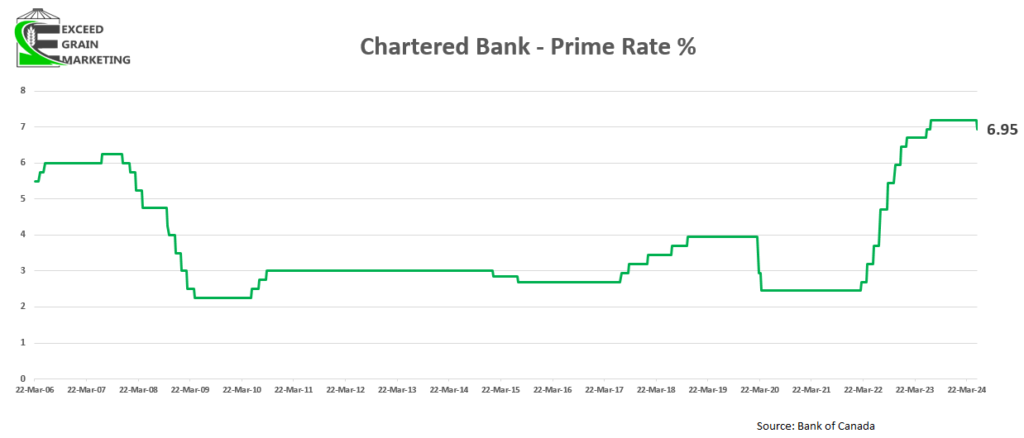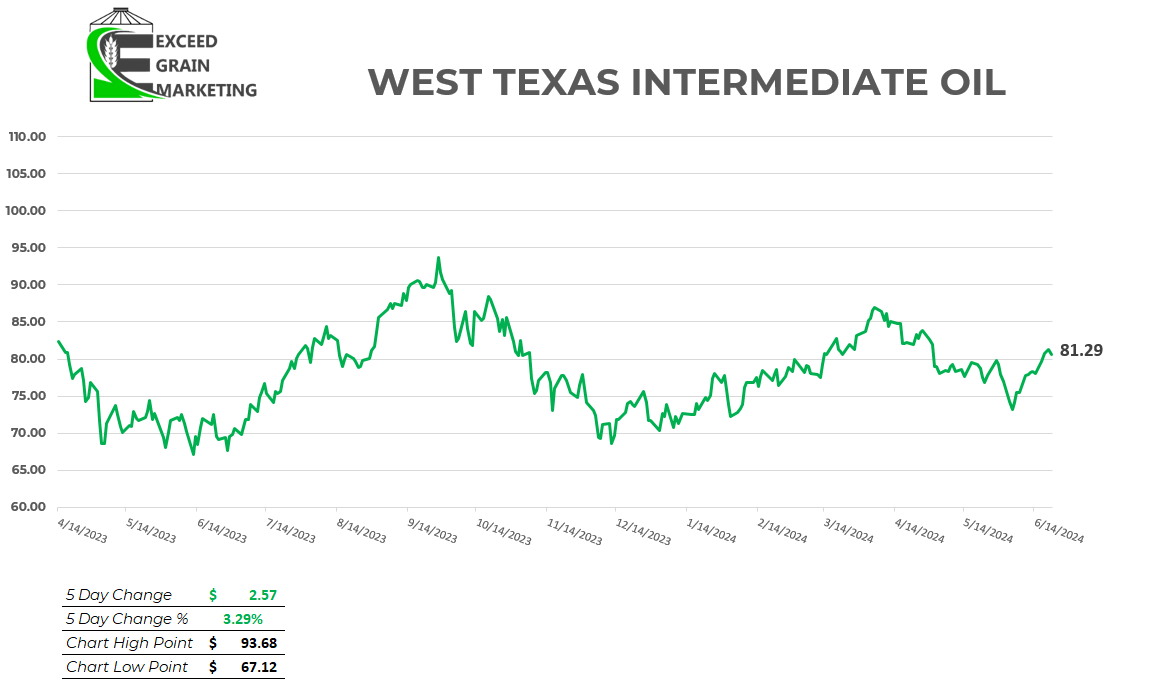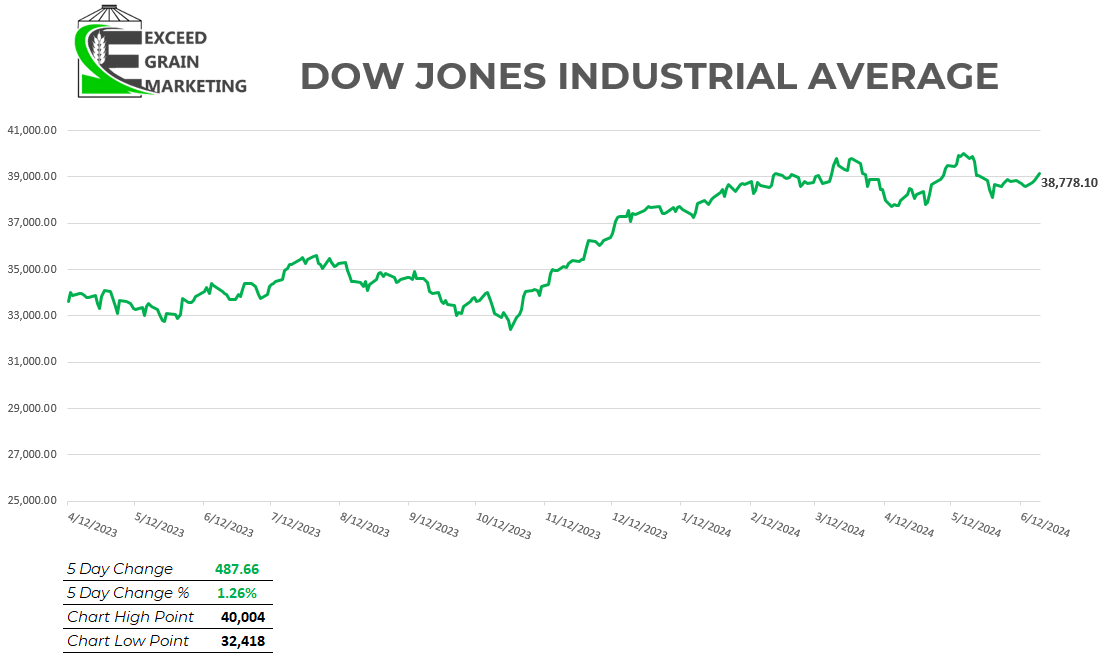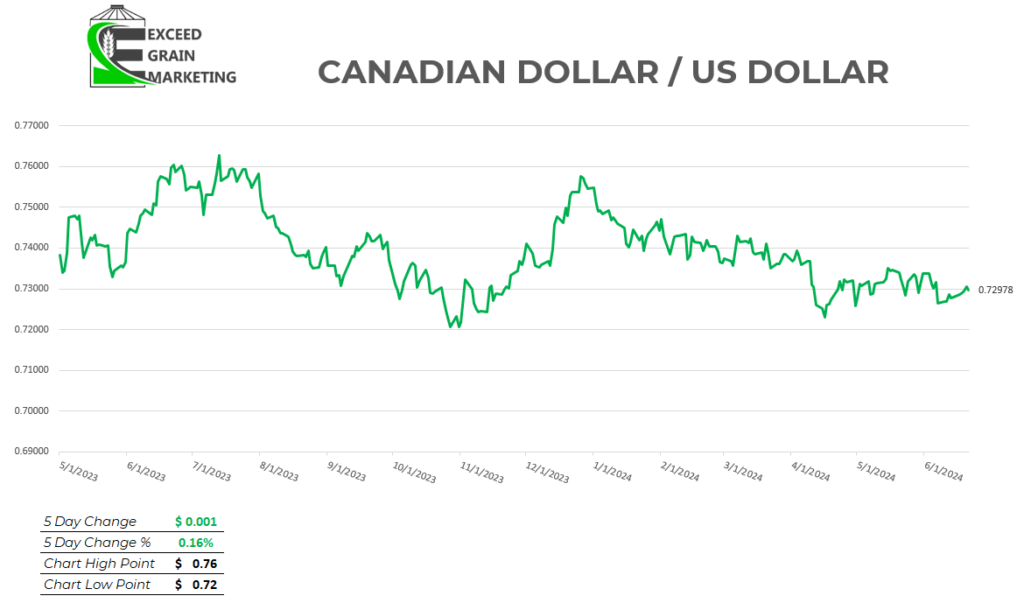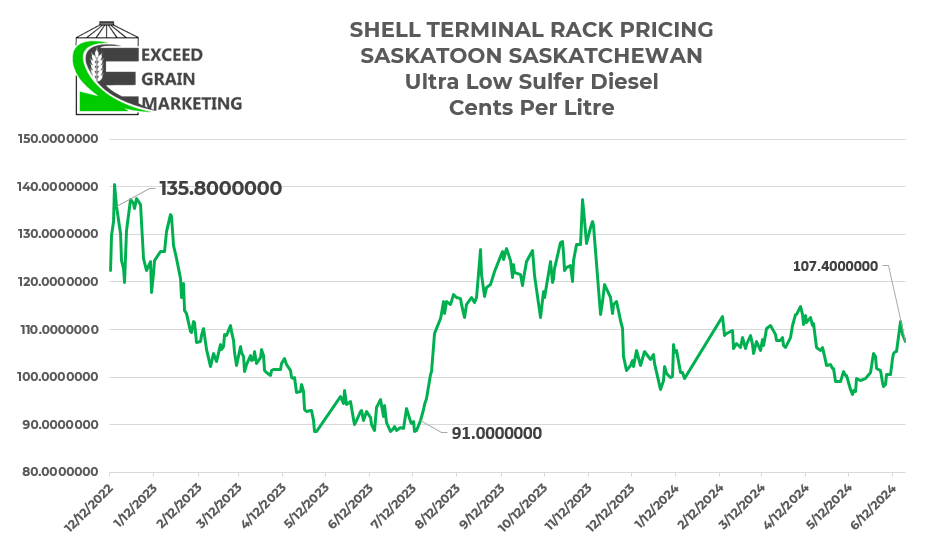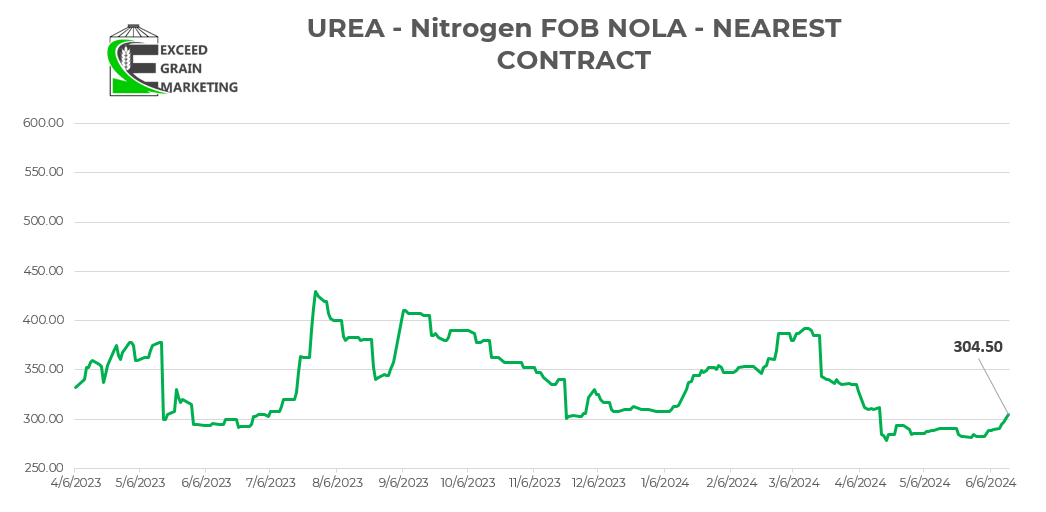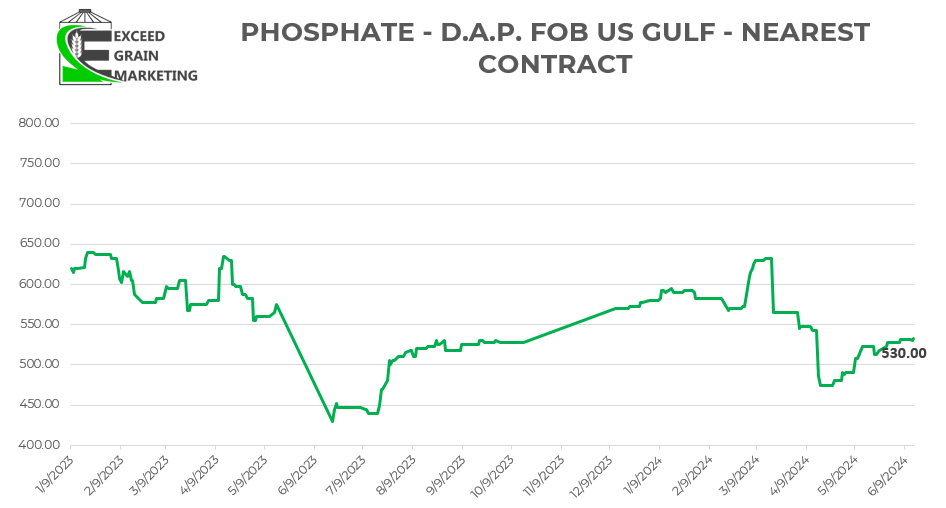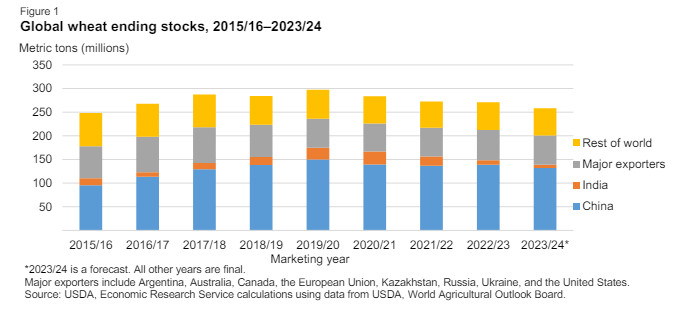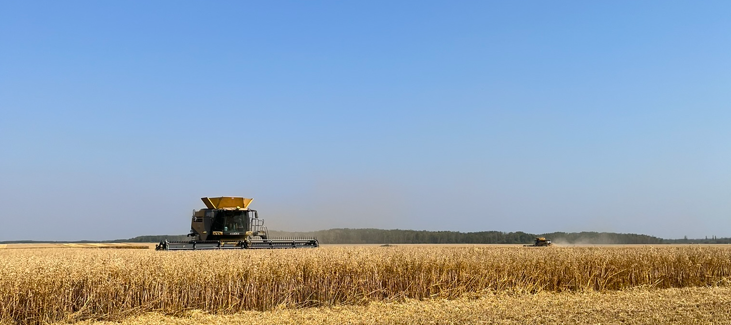Exceed Grain Marketing’s Client Exclusive report is dedicated to covering the ongoing trends and significant highlights within the local market, while simultaneously offering a perspective on the global landscape. This approach ensures a comprehensive understanding of the factors influencing the market at both local and international levels. Our aim is to deliver current, up-to-date information specifically tailored to the crops impacting your operation. Work with your Exceed Grain Marketing advisor to devise specific strategies that may work for your crop.
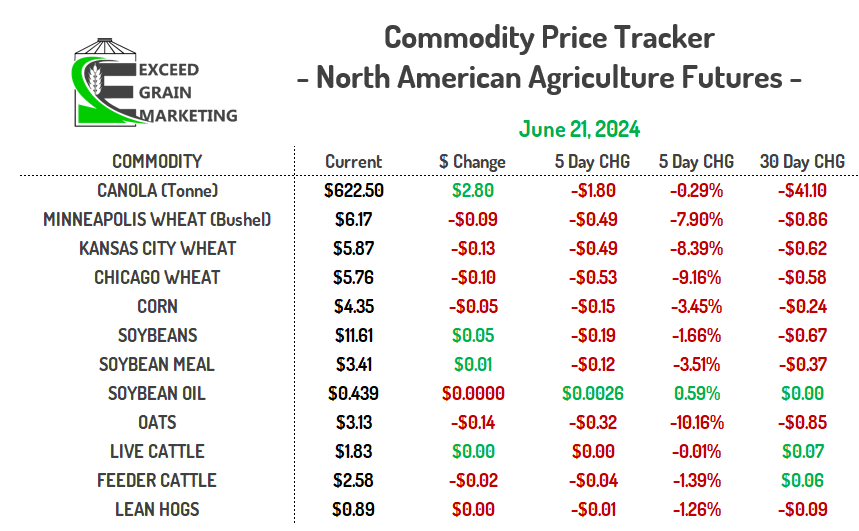
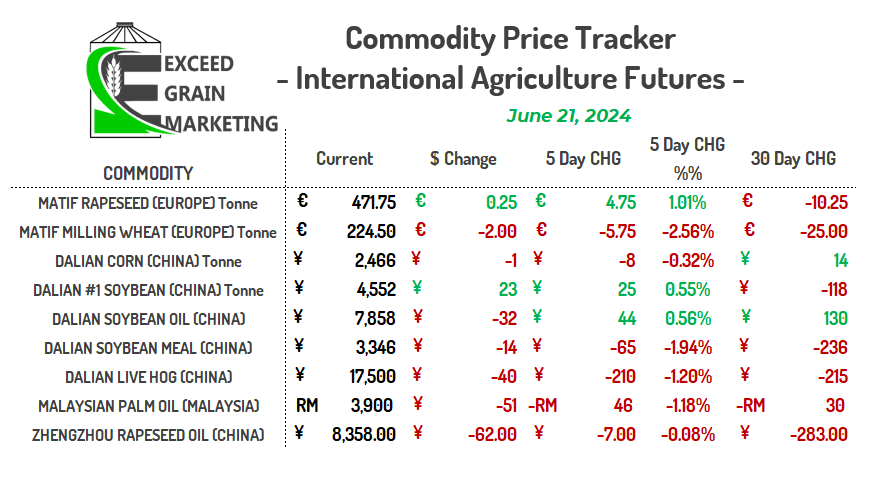

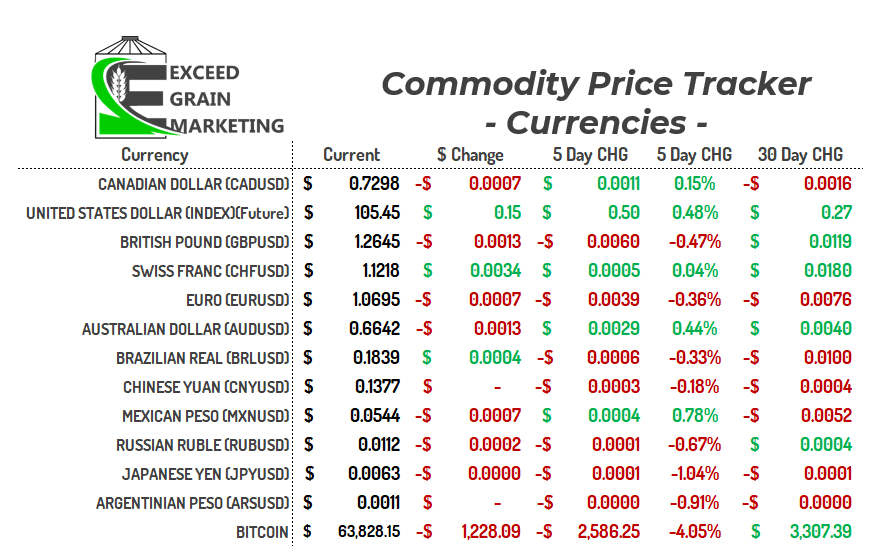
MARKET HIGHLIGHTS
- Link to Latest Canola Fundamentals Report
- 2024/25 Crop Year Recommendations – Click Link
- Ags close out the week lower.
- Australian crop conditions improving in Western regions with some recent rainfalls. Western Australia is the largest canola production region in Australia. Longer term forecast looks dry for the coming weeks, but some timely “Million Dollar” rains have hit recently to keep worry at bay for the time being.
- Canola prices up for the Friday session, although it looks like still going to post a weekly loss for the futures. Canola ICE futures have been on the same downward trend as other ags / vegoils. Canola FOB values have improved greatly for export and Vancouver and Thunder Bay export values are quite lucrative to importers right now. See chart below for FOB values. Canada will be working hard to pick up some of the shortfall in the European crop, much of this business we lost out on last year to Australian canola due to us being overpriced in to our secondary markets.
- Spring wheat and all the wheat futures have had a dismal June trading period. Three weeks into June and Spring wheat has only traded higher for one single trading session the entire month.
- The markets worries found in May have faded into the background and traders have took away all gains and then some in the Spring Wheat market. July Spring Wheat futures have traded lower everyday except for one Since May 24th.
- May had the bullish factors of Russian Frost, Australian Dryness, Canadian Dryness. The Russian crop was chopping a few mmt off of its size each week, sending markets higher. Canada was set to plant into some dry conditions once again. As the month of May progressed, US and Western Canadian, Australian moisture prospects all improved.
- Russian crop starting to come off. Mixed results. Early prospects at start of week were looking to be better than expected, then by the end of the week, producers began to find some worse than expected fields.
- We will get a first true fundamental look for the 2024/25 crop marketing year later next week as both Statistics Canada and the UDSA both release their updated Acreage estimates on Thursday and Friday. Friday will also give us a Stocks as of June 1st update for the United States.
- India announced it will not need to reduce tariffs on wheat to entice additional imports to keep market supplies sufficient. Markets were highly anticipating that India would need to do so for short term coverage
- US Eastern corn and soybean production regions forecast looks to continue its warmer than average bias for the next week to ten days. Moisture still in the forecast. Some longer term forecasts calling for US to receive less than average precipitation come July, but that data is still to far away to trade and wont be relevant until its in the 5-7 day. As it stands right now, many areas of the corn and bean region look good, moisture has been too much in Minnesota and few other pockets, but overall, there is no major areas of concern for drought or otherwise. The market is of the mantra that “rain makes grain” and needs to be traded with respect of that idea.
- Western Canada much like the United States, there is a heat deficit across much of the prairies which in turn will affect crops if not made up. Moisture has been too much in many areas of Manitoba and east central regions of Saskatchewan resulting in delayed crops and flooded areas where yields will be impacted. Large swath of Western Saskatchewan and eastern Alberta took some hard frosts and injured Canola, but very few reports of total field losses yet. Enough plants survived and the crops will be “set back” but still there if conditions turn favorable. At this point, western Canada will be looking for an open fall as many crops look good, but delayed.
- Turkey banning wheat imports until October to help control domestic prices. Turkey is typically Russia’s largest wheat importer.
- China has been hot and dry in the northeastern region of the Mainland. Some temperatures of over 40 Celsius in top corn and soybean production regions.
- US beans pricing better than Brazil beans right now, rumors of China interested in some old crop US supplies for old crop yet to fill some gaps in supply.
- Russia imposed a “State of Emergency” early June for the 10 regions affected by the Frost and Drought earlier in May. This is what drove the markets higher for the month of May and has been put on the backburner for the time being as markets pullback.
- US wheat crop coming off in Kansas, Oklahoma regions. The crop coming off with better yields than other years. Harvest pressure affecting pricing as well.
- European Union released their tariff guidelines in May for Russian and Belarussian grain imports. As of July 1st it is being reported that cereal crops (wheat, barley, ect) will be subject to a 95 euro per tonne tariff into the EU and oilseeds will be 50% tariff.
- Frost in parts of Germany and Poland late April / Early May has private analysts down to around 17.8 mmt. Last year around 20mmt
- The narrative has already begun that EU will need to import around 6mmt of Rapeseed/Canola for the upcoming campaign. This past year Canada missed out on most EU business in favor of Ukraine and Australian origin of cheaper origin.
- Recommendations Page Updated at Bottom of Report
- North American producers will welcome India’s extension of the Yellow Pea tariff exemption. Yellow pea imports will remain exempt from import duties until October 31st, 2024. Moving the exemption into the new crop season. Domestic yellow pea bids have increased as a result.
- Desi chickpeas will now be exempt from tariffs until March 2025.
- Australia has turned to planting more Desi Chickpeas this year, especially in Western Australia. Acres up 80%
- Australia is expected to plant a record 885,000 acres of lentils
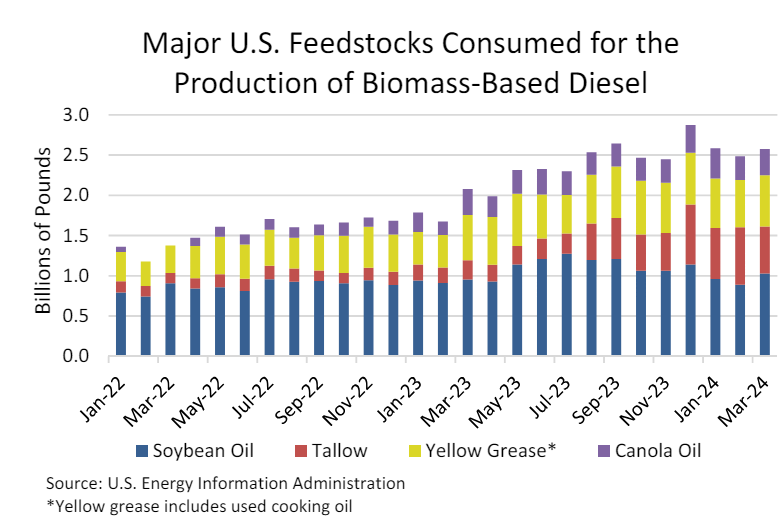
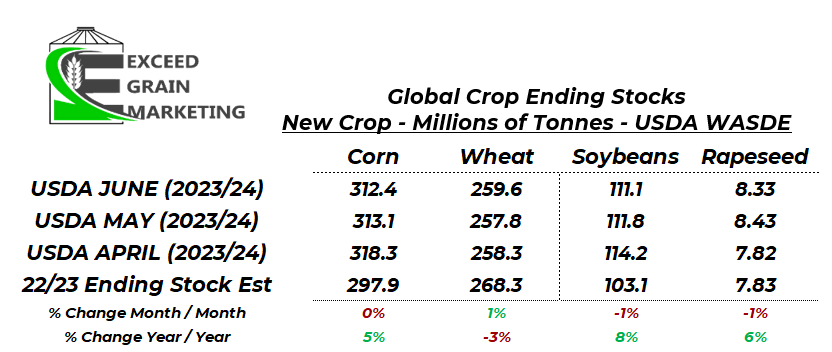
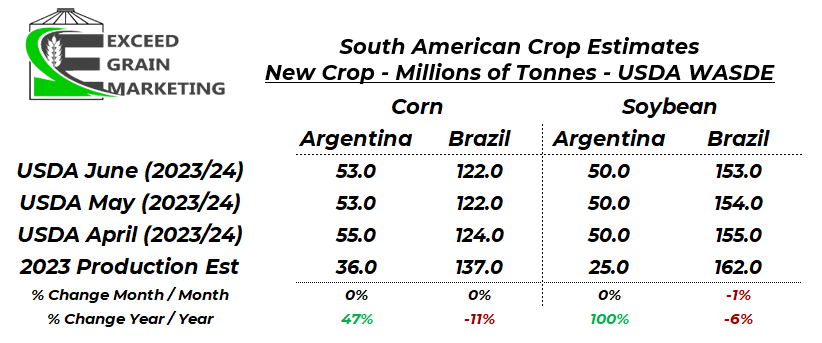

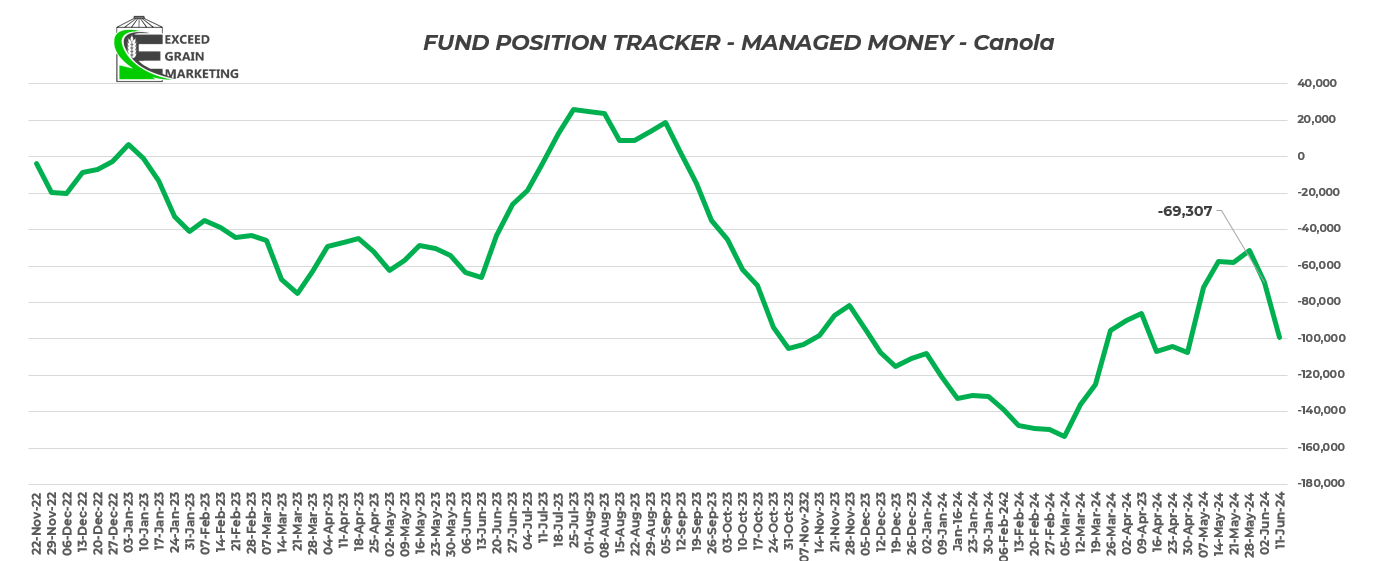

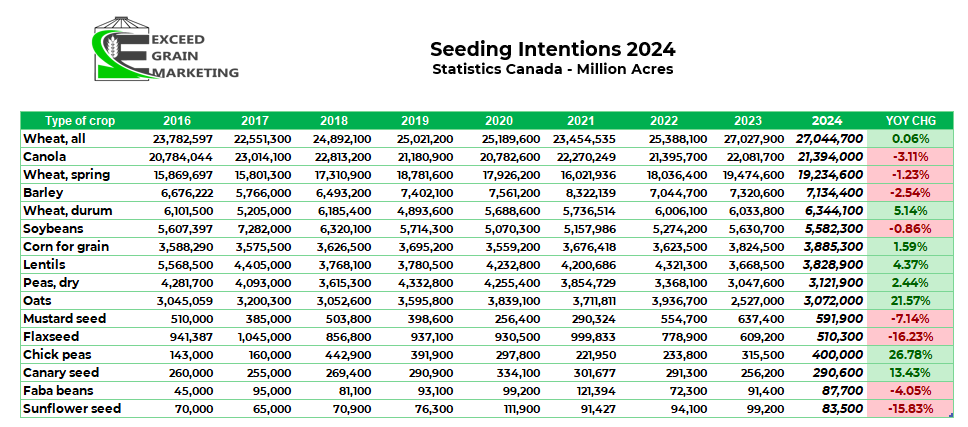
WESTERN CANADIAN CROP NOTES
Canola:
- Canola moves seasonally lower in recent weeks. Markets appear satisfied with the state of the current Western Canadian crop despite some heavy rains in particular areas such as Northeastern Saskatchewan and northwestern Manitoba. The crop overall has been missing some warm temperatures and is generally viewed as “late” in many regions due to unfavorable temperatures.
- We hit some important sales targets for our grain marketing clients Mid May due to the run up in futures from the February lows. See recommendation section below. July Canola only has a bit of trading time left before needing to be rolled or priced.
- Crushers filling up domestically for the front months as producer selling took up much of the front month capacity. Most crushers bidding July onwards. If need crusher movement, need to build a plan around that. July/August is where most capacity lies within the crush. Be cognizant of export and crush capacity as we get closer to the dates.
- Canola global pricing below. Canadian Canola moved cheaper than Australian FOB.
- Canola export current pace of 6.5+ mmt is not great overall and would be one of the lowest levels of exports in decades. See chart below for reference
- We need to grab exports on the tail end of the marketing year to maintain a reasonable carryout in the market. Looking like we will land around that 6.5mmt level for exports. Aside from 2021/22 drought, this will be our worst export season in well over a decade.
- Crush is running at a very impressive pace, looks like we will surpass and hit a 11mmt + record.
- Crushers hold the winning bid for new crop 2024 harvest
- For a more in depth analysis on Canola Specifically, check out our June 2024 Canola Fundamental report by clicking here: Canadian Canola Market Fundamentals – June 2024
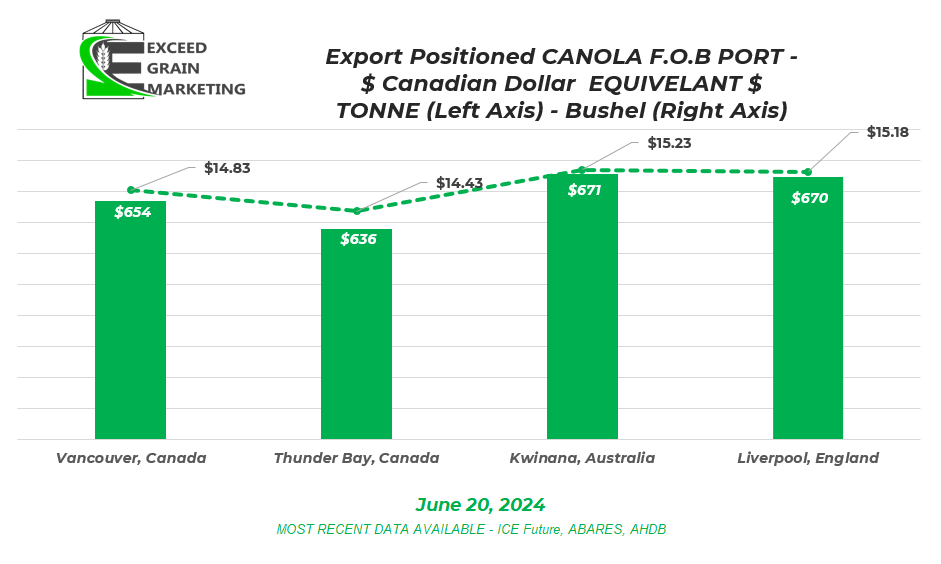
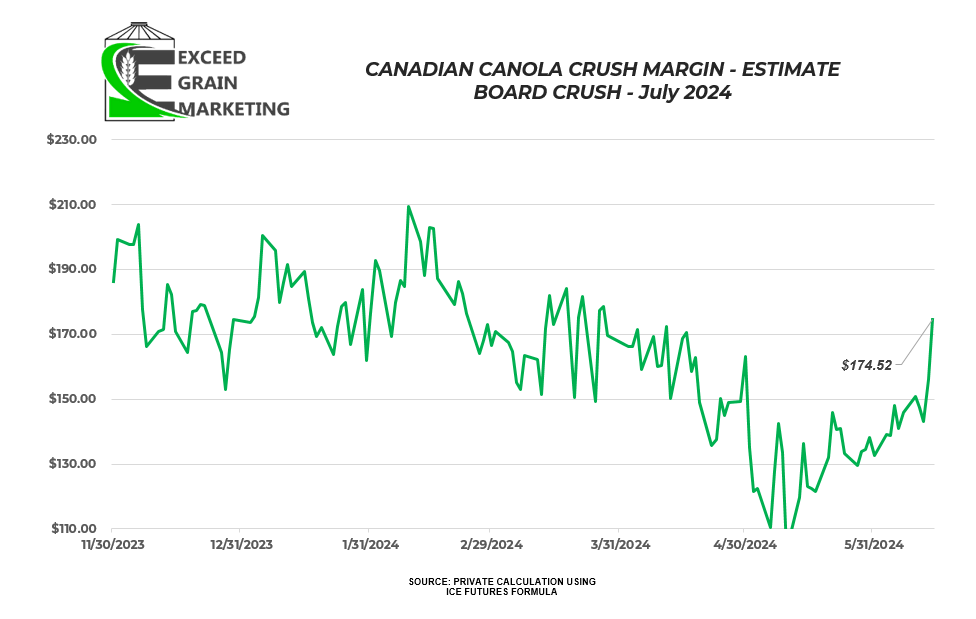
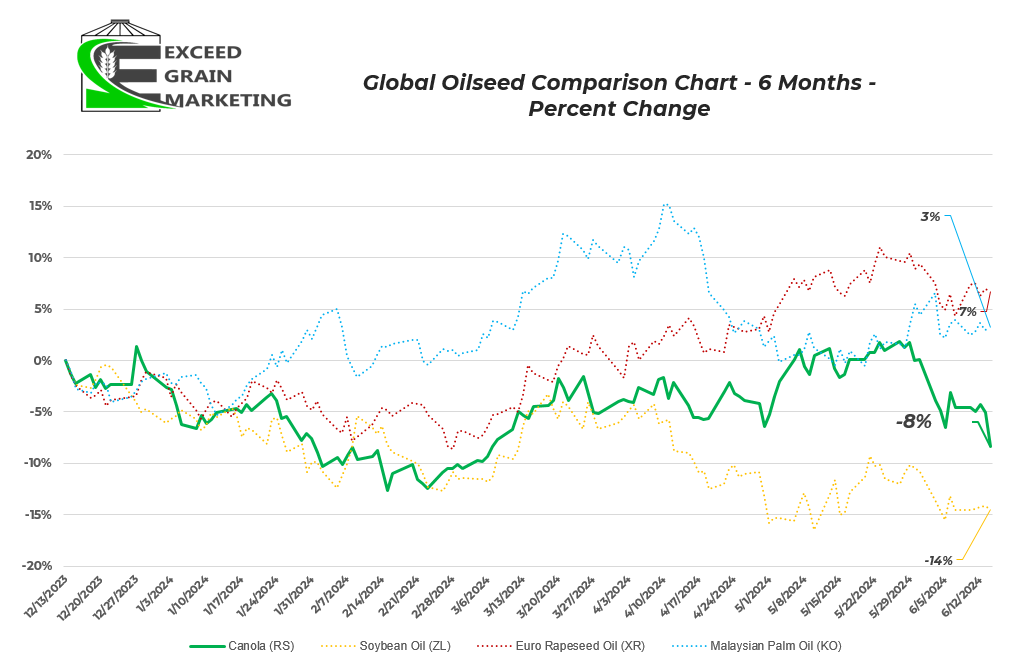

Spring Wheat:
- Wheat markets focused on the ongoing US Winter Wheat crop harvest which is progressing well and looks like it will come in as expected. No major surprises as of yet.
- For the Majority of May, Russia / Black Sea weather was the driver of wheat markets. Some significant frosts in Russia in first half of May causing some havoc with crop conditions. Now dryness in the same regions have been drying and lack of rainfall during some critical crop growth periods. The wheat crop harvest has begun and initial yields are mixed.
- Private analysts calling the crop anywhere from 79 to 85 mmt. Was closer to 93mmt earlier in the year. The USDA posted 91.5 mmt last years crop, the year prior was argued to have been higher and closer to that 100 mmt mark unofficially. So important context when looking to compare crop sizes.
- Indian stockpiles of wheat lowest in 16 years. This week the nation stated that they will not remove import tariffs and will look to bridge the gap in other ways. It was widely speculated up until a few days ago that India would enact certain measures to entice more wheat into the country. India signaling to the market that it will not enact any special measures to shore up stockpiles.
- US winter wheat crop coming off good without much delay. Looks like a slightly better than expected crop. Harvest pressure.
- Russia’s ministry of agriculture reporting that 830,000 hectares or over 2 million acres of crop were lost due to the multiple frost events of the first half of May. Privates saying at least double this. Russia called a state of emergency in many states to help producers have easier access to funding.
- Forecasted wheat global and domestic ending stocks coming in at the tightest levels since the 2015/16 crop year.
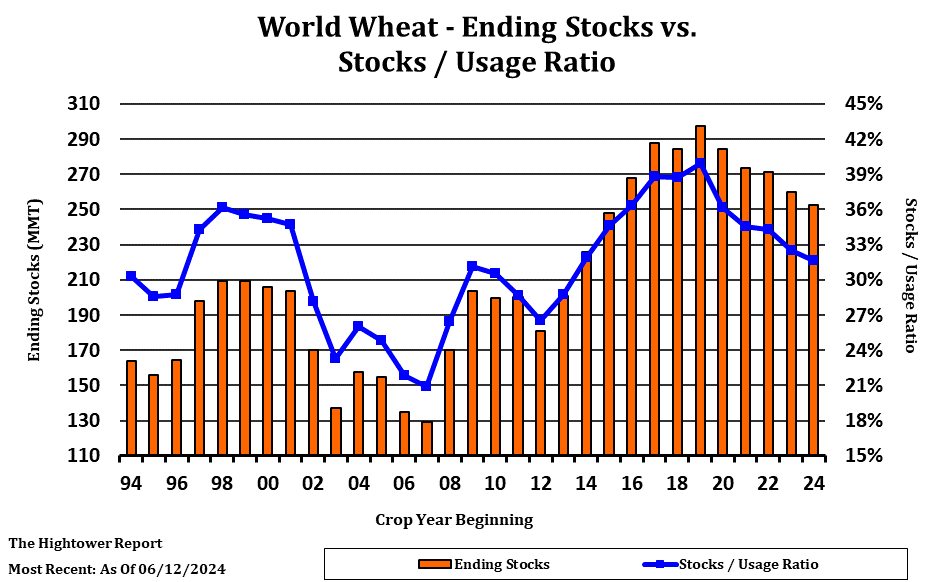
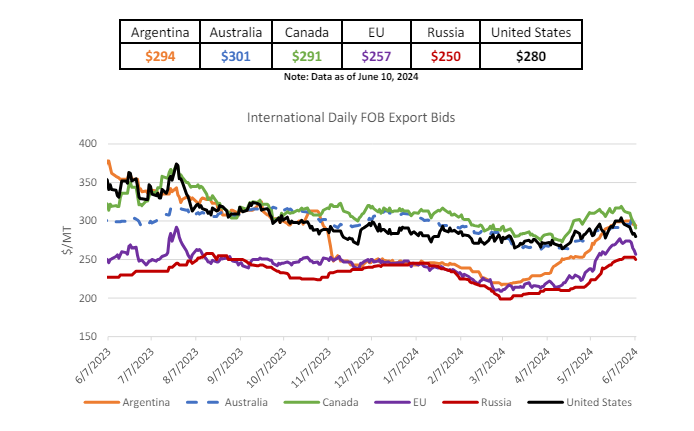
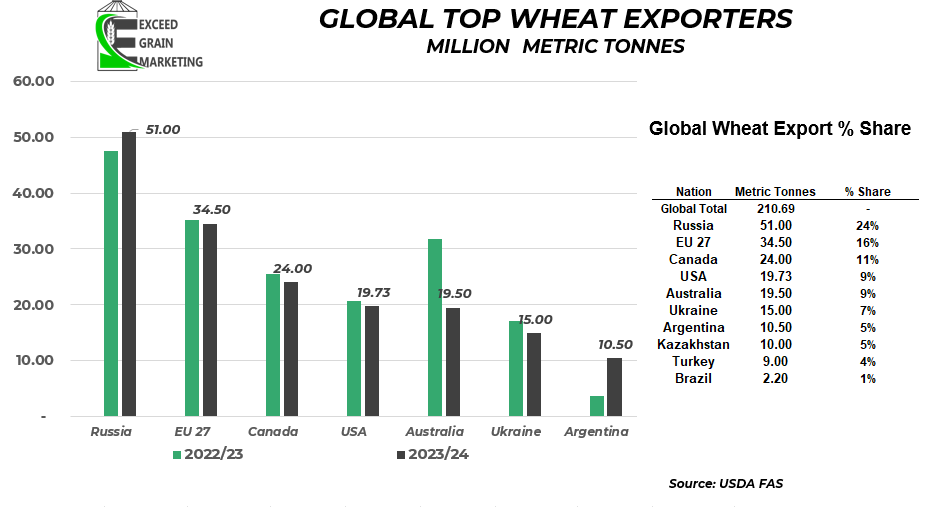
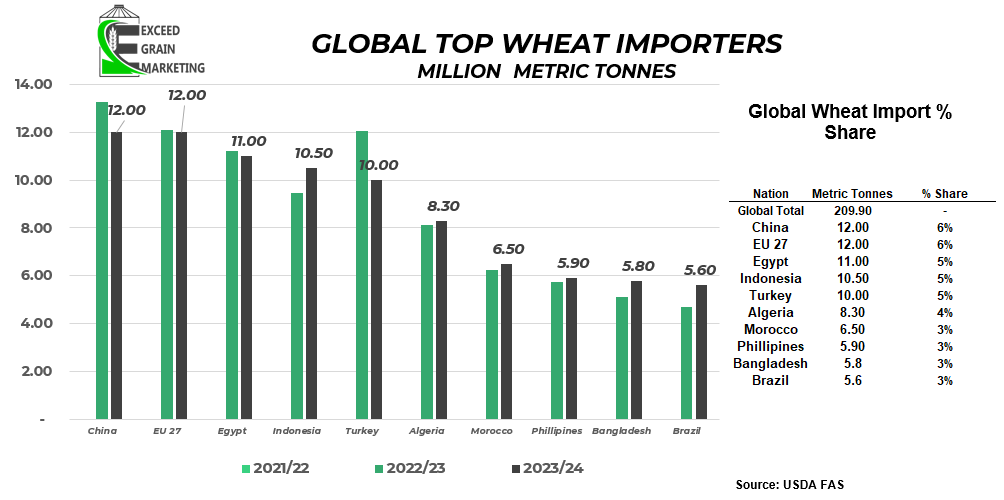
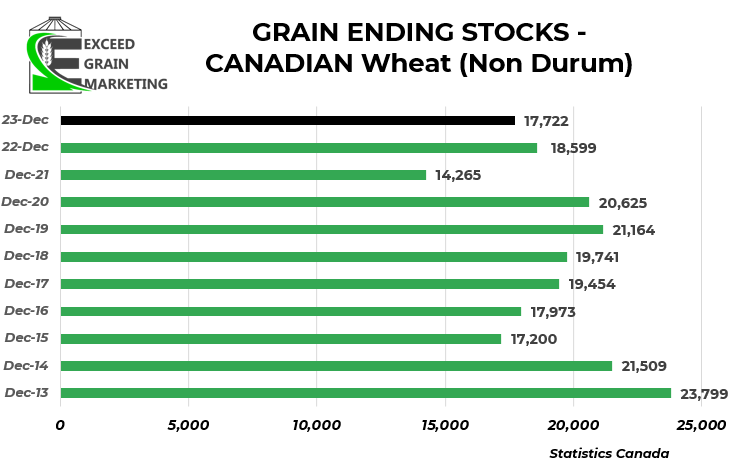
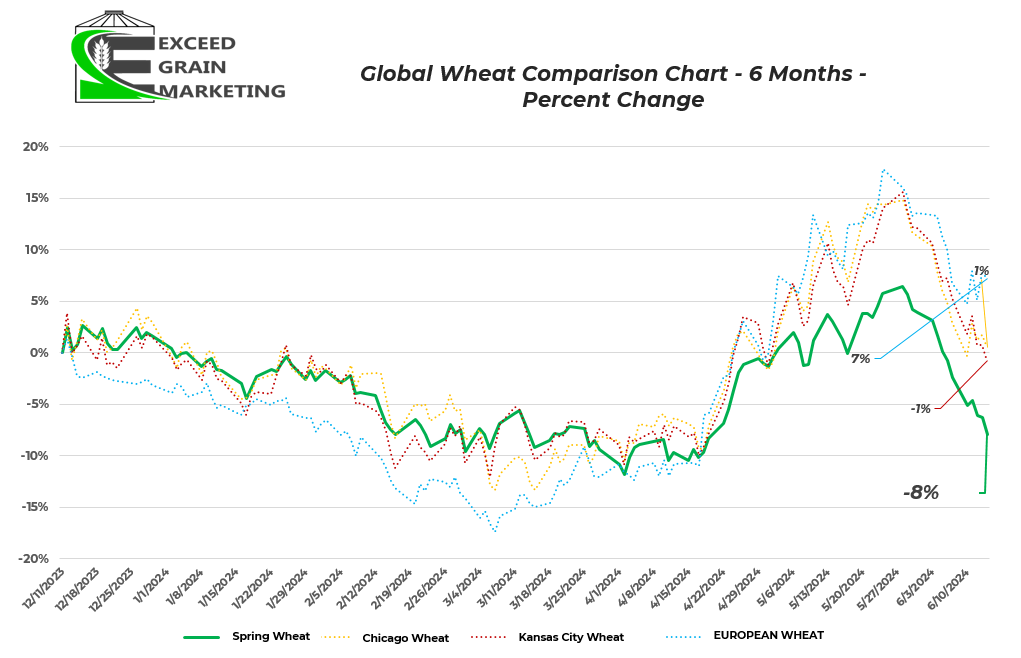
Special Crops
- Mediterranean region durum harvest underway. Still looking for consistent new crop Durum pricing from the area. Once we know this crop size and price indications, the rest of the weight will be put onto the shoulders of the Canadian Durum crop
- Special Crop analysts have a good feeling on what went in for crops this spring. Looking to next weeks Stats Canada and US reports to get a final confirmation on acreage prospects.
- Yellow Pea and Lentil Acreage expected to grow in Canada for the marketing year. The pulse crops are showing some excellent return potential for the 2024 cropping season if producers can bring it to yield at harvest.
- Special crop markets closely watched Marchs release on acreage estimates from Stats Canada.
- Barley acreage drops to 7.1 million acres. Fits in line with some trendline averages
- Barley prices lower than last year, as with many crops. Some $5.00+ feed opportunities available central Sask. Greater as you move closer to Feed centers. Add $1.25 to $1.50 for Malting.
- Durum acres up 5% year over year. One of the largest acreage estimates in recent years
- Lentil and Pea acres up year over year but still not out of line with recent history.
- One thing to note from this report is that it was collected from December to January 15th. Lots has changed in this timeframe.
- Canadian peas will face stiffer competition going forwards into China as some Black Sea peas able to price into the region. Some of these peas were affected by early May frosts.
- India reduced Yellow Pea import tariffs from 50% down to 0% was extended for several months and now sits at October 31st, 2024. Was only in place until end of March but another month, and then another, was added to get exports into the nation.
- Durum growing regions of Canada have got some recent precipitation but will be dependent upon some key rains following planting, producers somewhat hesitant to price aggressively on new crop.
- Red Lentil reduced import tariffs extended until March of 2025
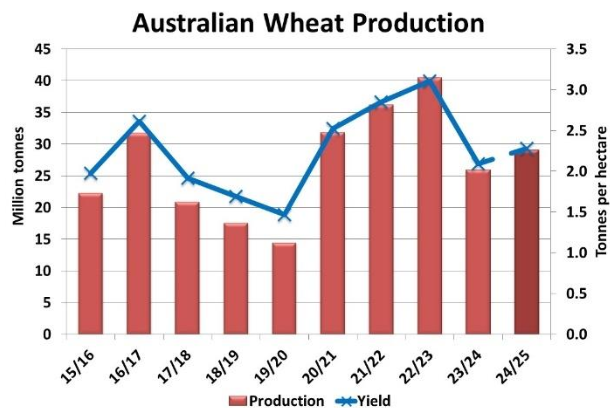
Currency – Energies – Fertilizer
- Prime sits around 6.95% at major Canadian banks.
